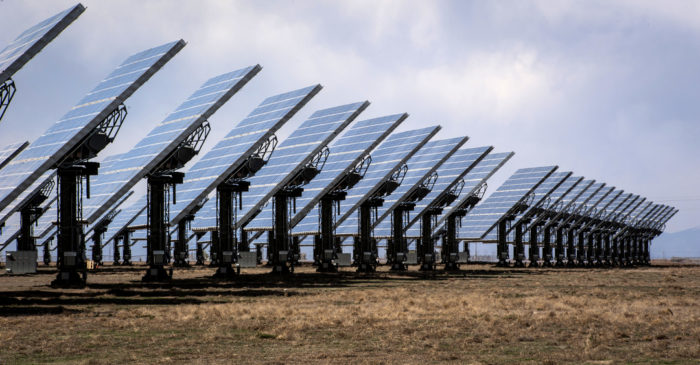
Image Credit: National Renewable Energy Laboratory
The contract price for electricity from a new solar-electric facility in New Mexico is the lowest for distributed photovoltaic (PV) power in the U.S., the Rocky Mountain Institute said.
The 3-megawatt installation in Alamogordo, New Mexico, is due to come online in March and will sell electricity to the Otero County Electric Cooperative under a 25-year power purchase agreement. The project is owned by SoCore Energy, a Chicago-based solar developer.
What’s called the Carrizozo project is the second solar facility developed by the Otero Cooperative. Its first was a 76-kilowatt project built in 2014 and later expanded to a capacity of 150 kW. The array in Alamogordo is being developed without any state tax credits or subsidies.
RMI, a non-profit research and consulting organization, said in a news release that it also is working with electric cooperatives in Texas and Colorado to help develop community-scale solar projects.
Separately, Greentech Media cited a new report from the International Renewable Energy Agency (IRENA) that predicts that all types of clean energy will match the cost range of fossil fuels within the next two years.
The study examined cost data from some 15,000 utility-scale projects, including biomass, geothermal, hydro, solar, and both onshore and offshore wind.
IRENA said the levelized cost of energy had dropped sharply for some types of power. Over a seven-year period from 2010 to 2017, for example, the levelized cost of electricity from utility-scale solar projects plummeted to 10 cents per kWh, a 73% decline that IRENA called “remarkable.”
For onshore wind, IRENA found that turbines commissioned in 2017 produced power for an average levelized cost of about 6 cents per kWh, an 18% drop since 2010.
GTM Research noted that utility-scale solar prices during the fourth quarter of last year ranged from a low of 3 cents per kWh for a project in Mexico to a high of 15 cents per kWh in Japan.
Factors driving the downward push on prices include technological improvements, competitive bidding for the procurement of electricity, and a growing number of experienced developers.
“The trend is clear,” the IRENA report says. “By 2020, all mainstream renewable power generation technologies can be expected to provide average costs at the lower end of the fossil-fuel cost range. In addition, several solar PV and wind power projects will provide some of the lowest-cost electricity from any source.”
Weekly Newsletter
Get building science and energy efficiency advice, plus special offers, in your inbox.














0 Comments
Log in or create an account to post a comment.
Sign up Log in